Ciara Tamay Del Grosso Bates
VR Projects
Virtual Reality projects made using Unity for PCVR and Oculus Quest. 3D assets made in Blender, materials using Substance Alchemist.
Dollface
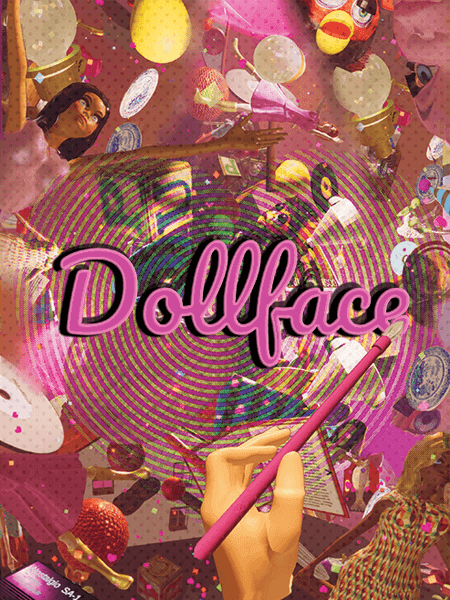
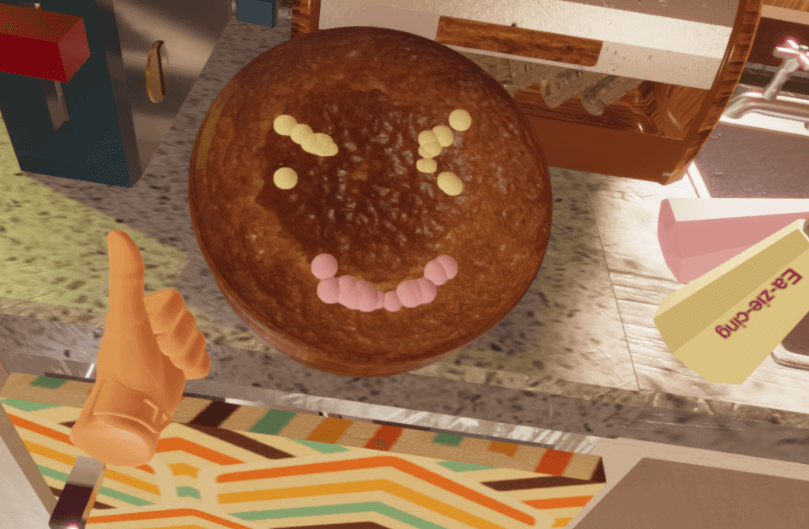
Dollface is a single-player virtual reality sandbox game, part domestic simulator and part creative toy - I built it to explore VR interaction as I learnt to develop for the medium, and designed it as an open, non-challenging exploration experience that makes the most of what is good about VR and puts interaction in the player's hands and puts the UI in the game world in the form of books, posters and a smartwatch.
I built Dollface solo using Unity 2019 with the new High Definition Render Pipeline and Steam VR. I made all 3D models and graphics in Blender / Photoshop, sound effects are from Freesound.org.
Players can paint on walls, canvases, play musical instruments, record music, take photos with manual cameras, read books, shoot hoops, bake cakes and buy more stuff with (fake) doll-ars online, enter cheat codes on your doll laptop and care for a giant furby.
Achievements are tracked loosely to reward trophies in a variety of skills, and some of the skills allow the player to earn money to buy better toys or different decor by "selling" their creations.
The final reward; the "Bigifier Deluxe" allows you to shrink or grow all of the movable items including yourself - so you can explore the house shrunk down or um... bigified.
Features + Video Links
- Customiseable environment (changeable materials on furniture, decor, video) doll clothing, hair and skin tones.)
- Step by step tutorial scene (video) to teach you how to move around and use items in the house, built with absolute beginners to VR.
- Hands-on interaction - buttons, levers, dials to control electronics- e.g. hoover (video).
- Record music using the Keyboard with 99 playable instruments and sampling- (video)
- Complete tasks to unlock rewards such as new materials for decorating, life size doll friends, records and books, and other toys!
- Combine ingredients in a physics-based blender to make recipes: cakes (video) or pies. Make magic cakes for a special short-term effect!
- Paint on the walls or on hangable cavases
- Hack the mainframe by using the laptop to enter cheat codes such as toggling the house lid open (video)
- Sell your art, recorded tapes, cooked food or photos to earn in-game money
- 3 Manual cameras (video) save images in-game, and also receive them as printed in-game versions you can hang up.
- Cook food and burn objects
- Smash tomatoes, eggs, watermelons, mess up the kitchen and then clean it up!
- Look after a Furby-style creature
- Play records, watch classic TV (video) and read classic feminist literature!
- Complete all the rewards and receive a special reward - the Bigifier! Allowing you to shrink or enlarge your doll and any moveable objects in the house.
- Throw basketballs and knives, and earn trophies for your achievements and skills!
- And more videos: The Toaster!
User Focus
Dollface was designed to be accessible for non-gamers and players new to VR, for casual play, and to use mostly direct interactions as opposed to controller buttons - players could grab and twist dials, push or pull doors, and pick up most objects.
I tested primarily with never-gamers and newcomers to VR - their reactions and behaviours were invaluable and allowed me to really stress test my interactions for anything confusing or easy to break.
I kept interaction similar across objects, made buttons and dials obvious, and designed doors and levers to respond to physical pushes and pulls as well as grabbing interactions. I created a visual vocabulary for things you could interact with using colour and shapes.

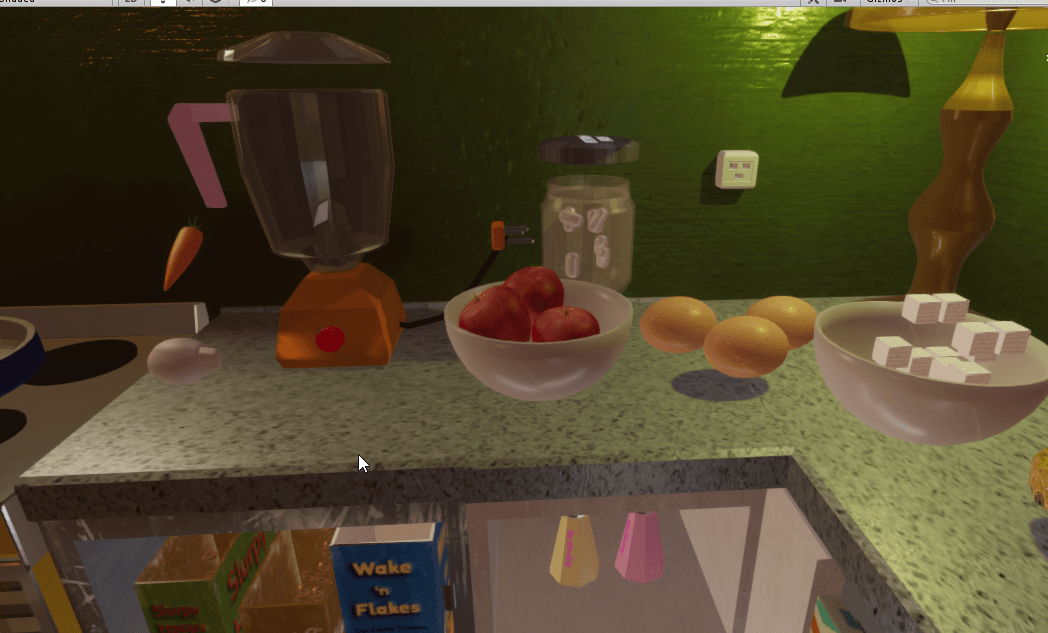
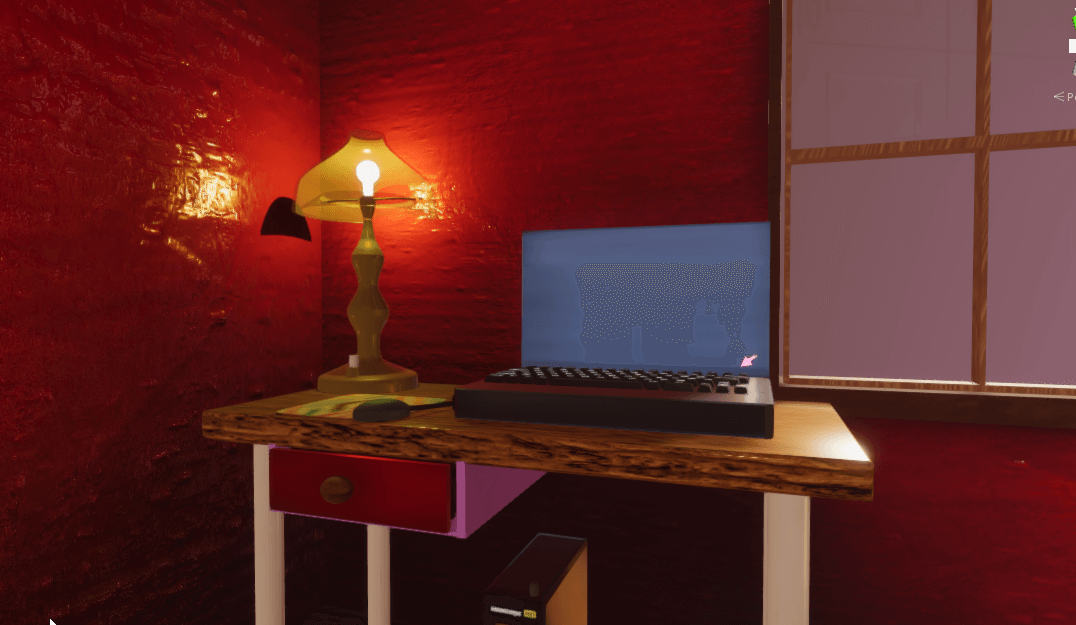
Responding to User Tests
I wanted the experience to be very open and free, but in testing, many users reported they wanted to know what they were "supposed" to do. I adapted the experience so that there was a suggested direction for players who wanted it - optional challenges which would lead to unlocking new objects, and also helped direct the new user to the main features and interactions in the house.
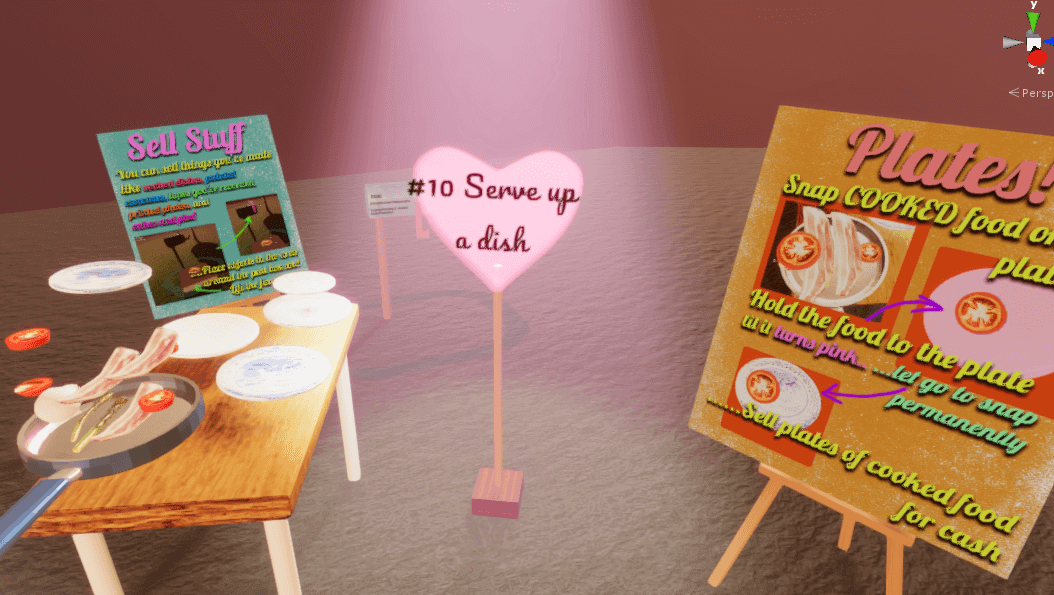 .
.
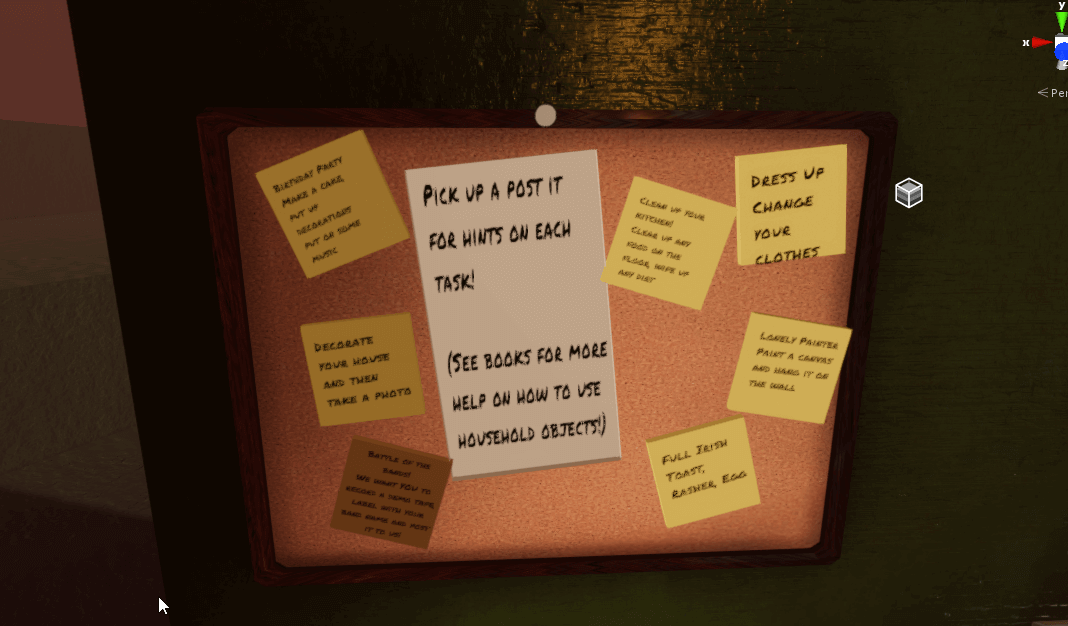
Adding a tutorial level guided players step by step through basics such as grabbing, teleporting, using books and buttons before moving to the main dollhouse. The response to this was immediate - players who entered the dollhouse after the tutorial reported feeling confident that they knew how to use objects they had seen before, but also new objects, whose interaction could be inferred.
This was helped by creating a visual language for things you could push, pull or twist using solid, obvious dials, buttons and levers and using flashes of red to highlight these elements.
.Beginner Challenge
I designed the environment for and with VR - Dividing interactions by function such as creative tool, modification, puzzle, and physical game. I initially planned on 3D puzzles, but found that users were either clumsy in VR and found them impossible, or were naturally "fluent" in moving in VR and solved them with no challenge.
I decided to only use challenges based on the user's own definition and choice. For instance, you could practice knife throwing and beat your own record, or basketball, but there was no objective good or bad score.

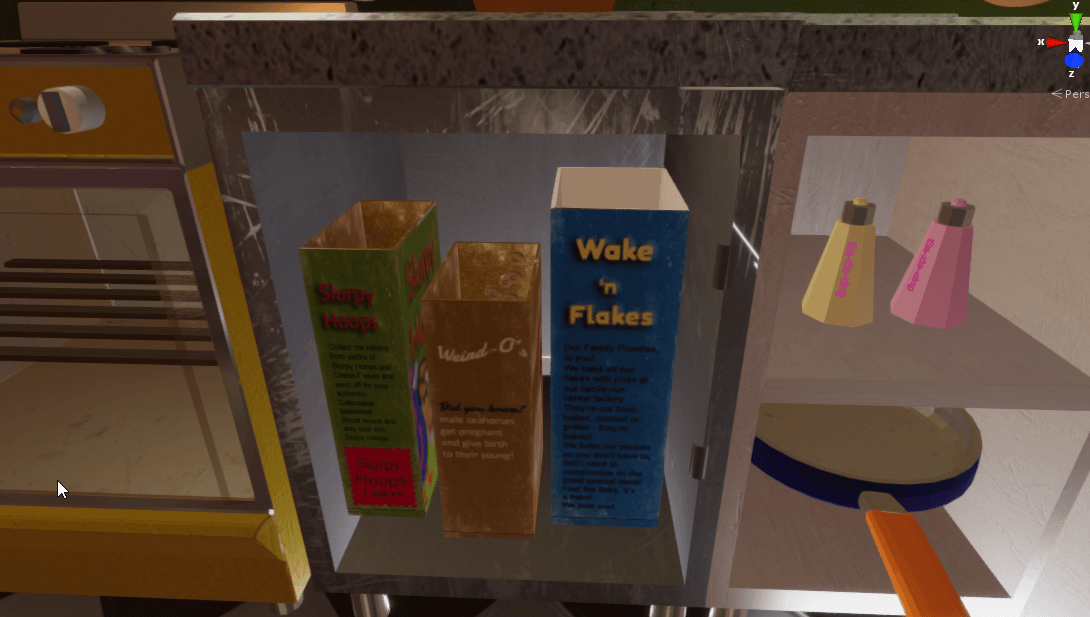
Kitchen
My kitchen features lots of interactive objects including a blender, toaster, cooker, icing, ketchup, hoover, and taps as well as lots of throwable, breakable, burnable food and other items..
I wanted to make my own "Lab" for testing what was interesting and what was fun, and build interactions and experiments within that context, testing prototypes regularly and building the next stage around what users liked, didn't like, and tried to do but couldn't (early testers tried to sweep up broken objects, inspiring the hoover interaction, and burning the sponge in the toaster, inspiring the burning mechanic.)
Types of Open Play
Many objects have no specific purpose but belonged broadly to the physical game that allowed the player to explore and added depth to the environment.
Other items are creative such as painting, music, and photography, which saved the player's creations on the hard drive, as well as creating an in-game physical version of their art. Customisation objects were the doll figure, the walls, and any object marked decoratable. And media objects, for playing video, reading books, or playing records, and beat-your-record objects such as basketball and throwing knives.
Some items contain a recipe or instructions such as entering cheats on the PC or cooking. To allow the player to continue doing things while also letting them destroy everything around them, I added online shopping - so new ingredients or canvases could be bought.
Housework Simulator - Cleaning up a virtual mess!
My first experience of VR interaction was as a chef in Job Simulator. I discovered the joy of throwing wine bottles and cups around, breaking everything in sight. It never occurred to me that someone might want to clean up a virtual room, until I gave it to my mother to test. She looked for a dustpan and brush to clean up, and I thought this would be easy to add and something I hadn't seen elsewhere in VR - would people enjoy virtual housework or just feel compelled to tidy up after themselves? In my world, I wanted to make things possible even if the answer was mostly, no.
The dustpan and brush ended up being much more complicated than I anticipated, having a thin enough edge to scoop up small objects made it less reliable for physics calculations - so I created a vacuum cleaner which was inspired by toddler toys. It could be used in both suck and blow mode.
Design
The visual style of this project was based on vintage dolls and their furniture (particularly 1970s Sindy furnishings- see the Hifi, pictured source and end result) and trying to recreate something of the plastic and paper look. I was inspired for the layout by my own dollhouse that my grandfather made me which I decorated with paper fairy lights one Christmas. Outside the house is a dreamy, distant vision of a giant room, to focus the user's attention close to the house without putting up any real barrier.
One of the big questions I faced designing the house and its contents was what to do about furniture that couldn't be used in VR - beds, chairs, and bathroom furniture. After an initial test with a bedroom set, it seemed those items just reminded the user of what they couldn't do in VR and made the scene cramped. I only wanted objects you could use, and nothing you would have to walk through or around. For this reason, the rooms on the ground floor are the kitchen and a chair-free living room, and upstairs is a music room and a computer room / office.
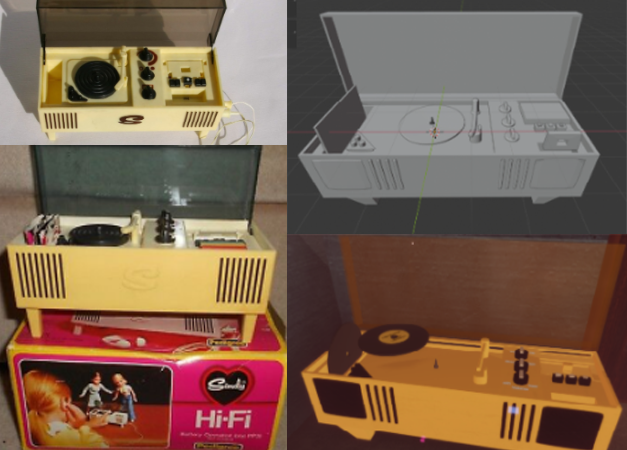
 The dollhouse was based on the dollhouse my grandfather made me, its lid could be opened or closed
The dollhouse was based on the dollhouse my grandfather made me, its lid could be opened or closed
Download
Downloadable build available for SteamVR headsets (HTC Vive, Oculus Rift, Valve Index) on itch.io: Dollface VR
Update: Downloadable build has been removed as it's not playing nicely with updated versions of the SDK. I'm planning to port this to Quest when I have some time.
View a short trailer for Dollface and videos of other gameplay and features below: (Youtube playlist)
Alien Orchestra
This was a small project made with a sound engineer for the Global Game Jam 2020. We built this game over 24 hours, designing a set of surreal musical instruments which would start broken, with distorted sound, and could be repaired to restore the music and soothe the agonising aliens around us. We had such limited time that we had to reduce the scope considerably.
This was a fun exercise, playing with physical interactions such as placing guitar strings, tightening drums, and slotting the correct shapes in place.
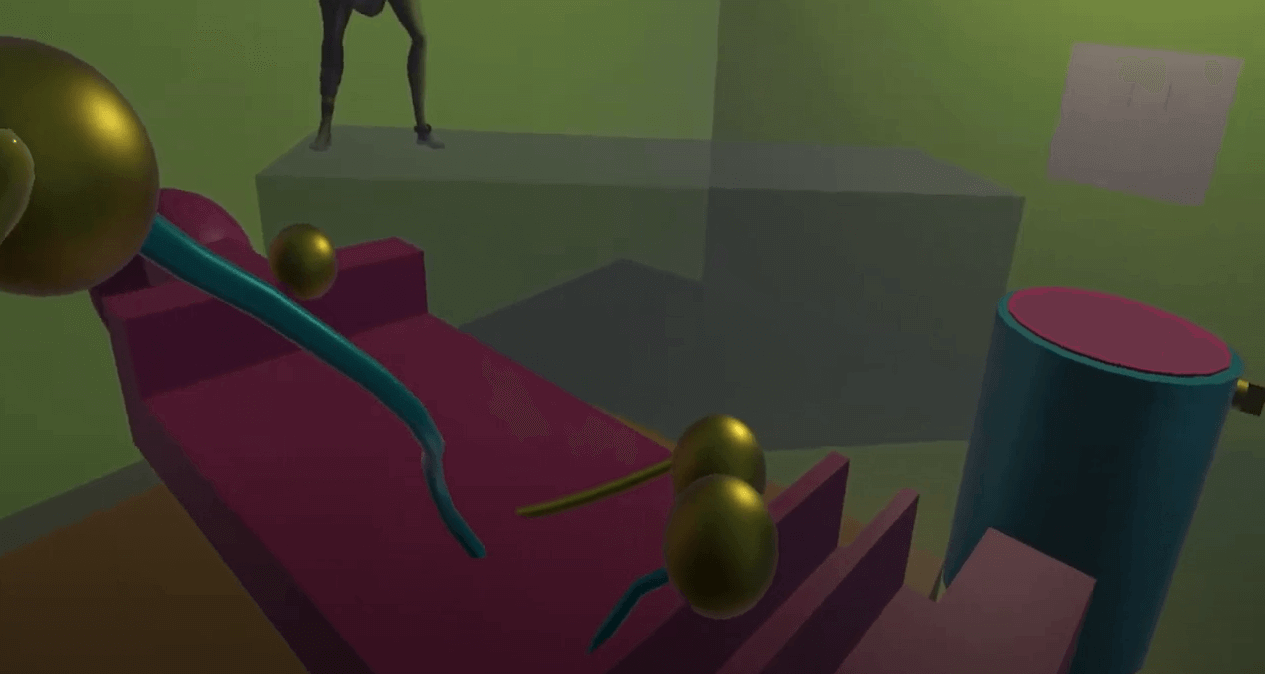
Features
- Three alien instruments with their own mini puzzle to solve
- A string instrument with physics strings which need to be placed on the frets
- A drum type instrument which needs to be tightened
- An instrument with shaped buttons which need to be placed in the correct slots
- Three sound tracks with distorted (broken) and repaired versions made by my teammate Greg
- Hint for how to complete the puzzles can be revealed by switching on different lights in the room - red and blue lights hide or reveal the message on the walls.
Platform

Runs on SteamVR devices Oculus Rift, HTC Vive, Valve Index. It also runs in "2D mode" if you don't have a headset - limited but you can use the mouse to interact with some objects.
Below: Video of gameplay in Alien Orchestra.
Nostalgio Keyboard
A standalone version of my keyboard for Oculus Quest, with hand tracking.
Features
- 97 different sound effects that could be played across the keys as instruments
- 3 slots for the user to record their voice samples to play as instruments, pitch shifted across the keys
- Could be played physically as well as using hands - by dropping objects on the keys, dropped or swinging the keyboard, or using cutlery
- Ability to record the user's creations and save wavs to the hard drive
- Recording of both keyboard output and world sound - to allow balloon popping, room trashing, voice and other sounds to be captured.
- Recordings are also saved to in-game casettes which can be taken and played on the hifi - whose output can be picked up by the keyboard's recorder, allowing users to layer their own backing music and play over it.
- Designed by me - with no musical skills or instrument knowledge - it's a toy rather than an instrument.
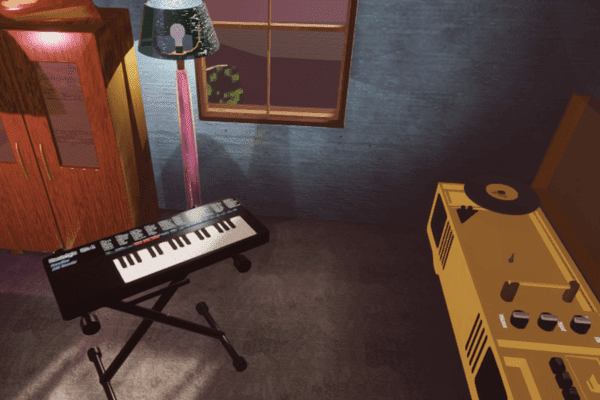
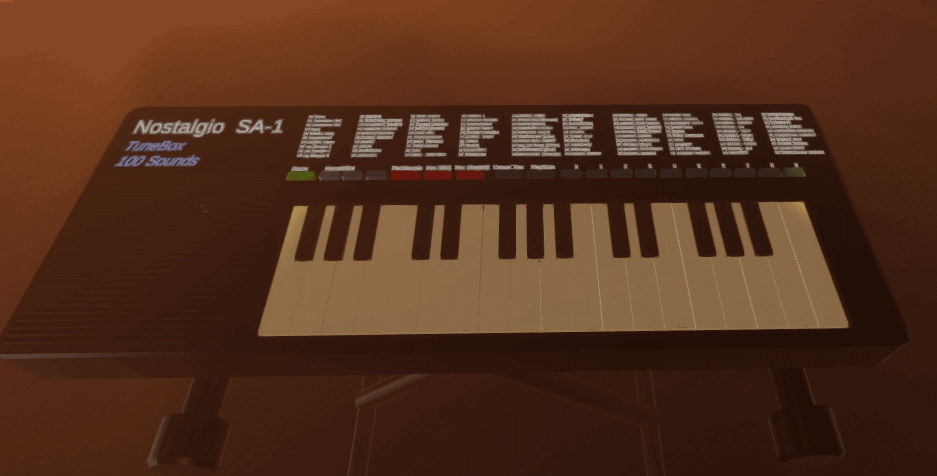
Music
The keyboard is one of my favourite parts of the dollhouse experience, modelled after a Casio keyboard I had as a child, which allowed you to play with 100 different instruments, from the classic piano to a ringing phone.
User response was great. While I didn't have individual finger movement as I was using a HTC Vive, I created a simple pointing finger hand pose which activated whenever the user's hand was close to the keyboard or the computer which allowed them to type or play with more precision. As the keyboard was "physics-based" you could also play it by holding a knife, fork or dropping a melon on it!
I later created a standalone version of the keyboard with hand tracking for Quest.
I built on the features of the original keyboard, responding to user feedback to allow recording compositions to create in-game physical casettes to play back or layer to create multi-track recordings, also allowing the user to swap in different clips which are then pitch-shifted to be played on the different keys. Users can also record a short voice sample which they can play as an instrument, pitch-shifted across the keys.
Platform

Runs on Oculus Quest with hand tracking, and is also available for PCVR with controller support.
Below: Video of gameplay (older Rift version, with fingers pointed on approaching the keyboard, not hand tracking).
Carlow Arts Festival Virtual Campus
Designed and built CAF online virtual festival hub
Priorities were to host a variety of media types from 360 video to spatial audio and 2d video, providing a taste of the real festival, host talks and meet ups between artists, festival organisers and the public, and allowing access by as wide a range of users as possible.
The Altspace world, built in Blender, Unity and Altspace, is optimised to allow video, audio and graphics content to play on Mac, PC, mobile and high end VR devices.
The performance requirements meant that files had to be tiny - priority was given to artworks, and so I created "cardboard" cutouts to represent the buildings and used simple animations to provide a sense of activity, and counteract the "empty" feeling of being in a virtual world with a far smaller audience than a real world event.
Using Altspace
I tested a long list of social virtual reality platforms to determine which was most suitable before settling on Altspace. Altspace did not natively support all of the media types we wanted to include, such as 360 video, or streaming of multiple video files, but I was able to create custom solutions in Unity to support these and allow users to walk through a virtual exhibition of short films, spatial audio, and even meditate in a VR sphere.
Other platforms allowed more complex customisation or robust support for media such as VR video, but were less accessible or supported only high end VR devices.
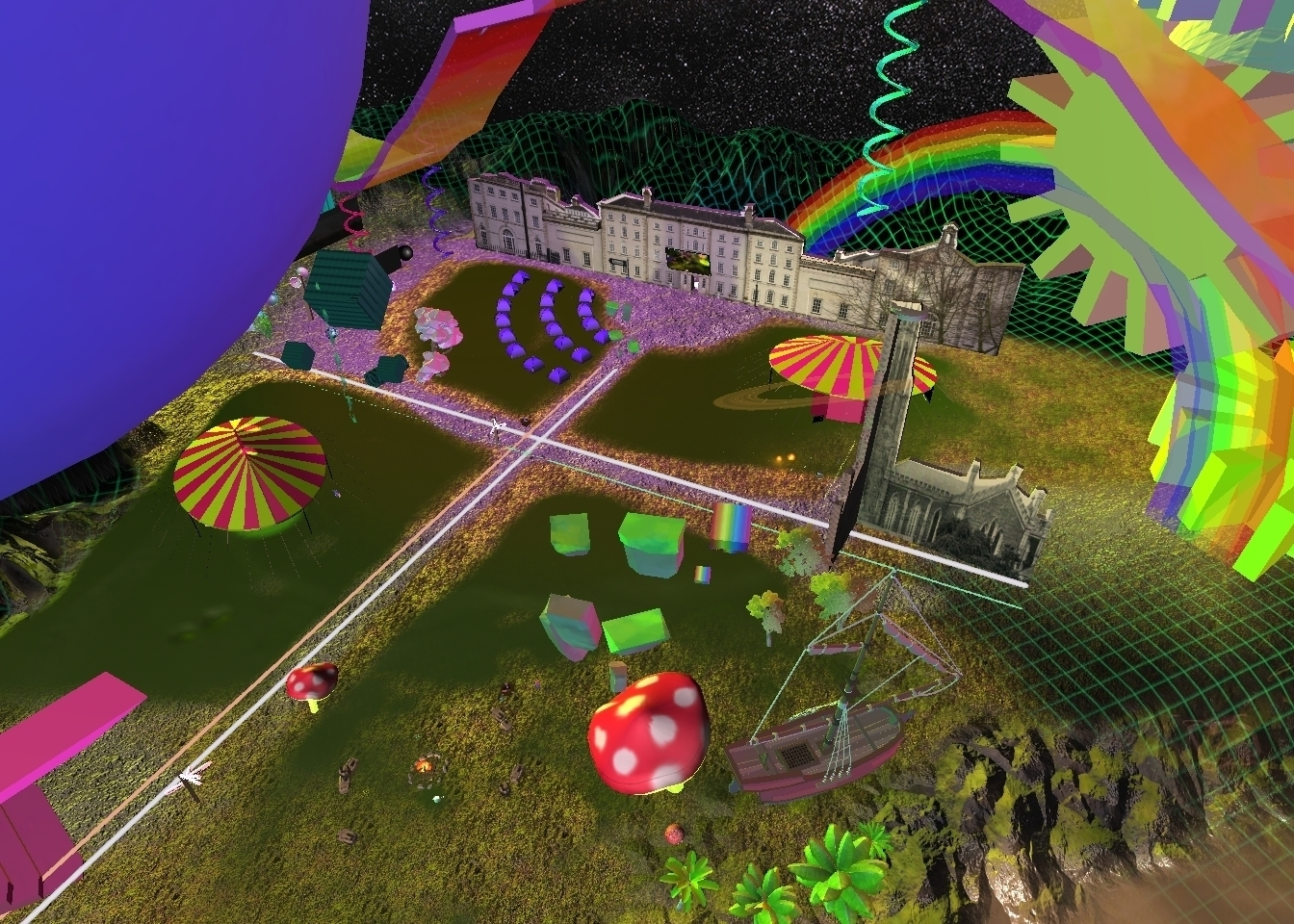
Visit

The festival is now over, and some of the artworks present have been removed from the site, but you can still visit the festival world here: Carlow Arts Festival
You will need Altspace installed on your PC, Mac, or VR headset (Quest, Rift, Vive, etc). Older mobile devices like Gear VR and GO are not supported.
Below: Live streamed video of launch party